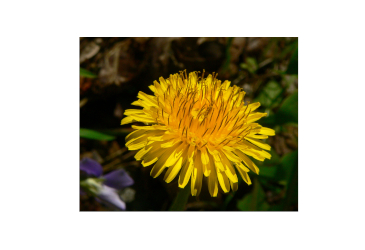Dandelions
Genesis 1:12
“And the earth brought forth grass, and herb yielding seed after his kind, and the tree yielding fruit, whose seed was in itself, after his kind: and God saw that it was good.”

My parents did not want dandelions in our garden. They are classed as weeds, and they have a tendency to take over large areas, especially in flower beds and also among the grass in a lawn. But when we came across them in the countryside, they were much more welcome. Pretty much every part of a dandelion plant can be put to some useful purpose.
Dandelion leaves can be eaten as part of a salad. They have a mild, peppery taste. When I lived in England, I would collect together a woodland salad, with finely chopped dandelion leaves, wild garlic, and blanched nettle leaves.
An infusion of the flowers in olive oil makes a fine remedy for aching muscles. A jar can be filled with flower heads, lightly pressed down, then filled with oil, sealed, and left for two to four weeks. Alternatively, the flowers can be treated with gently melted coconut oil, then solidified to make semi-solid balm.
The roots can be cleaned and used in one of two ways. They can be finely sliced and sautéed as a vegetable. Or you can roast them on a very low heat. The dried roots are then put into a coffee grinder and powdered. The resultant powder is brewed like coffee, and tastes similar.
It has often struck me that God has made a lot of very useful plants for us, like the dandelion. It makes little sense to me to suppose that so many uses could all have evolved. This is an example of God’s creative power.
Prayer: It is marvelous, Lord, to see all the wonderful things that You have made. Thank You for the various herbs and plants that You have made for our use. Amen.
Ref: Encyclopaedia Britannica, < https://www.britannica.com/plant/dandelion >, accessed 3/31/2018. Image: Photo by Greg Hume, Creative Commons Attribution-Share Alike 3.0 Unported.
© 2023 Creation Moments. All rights reserved.